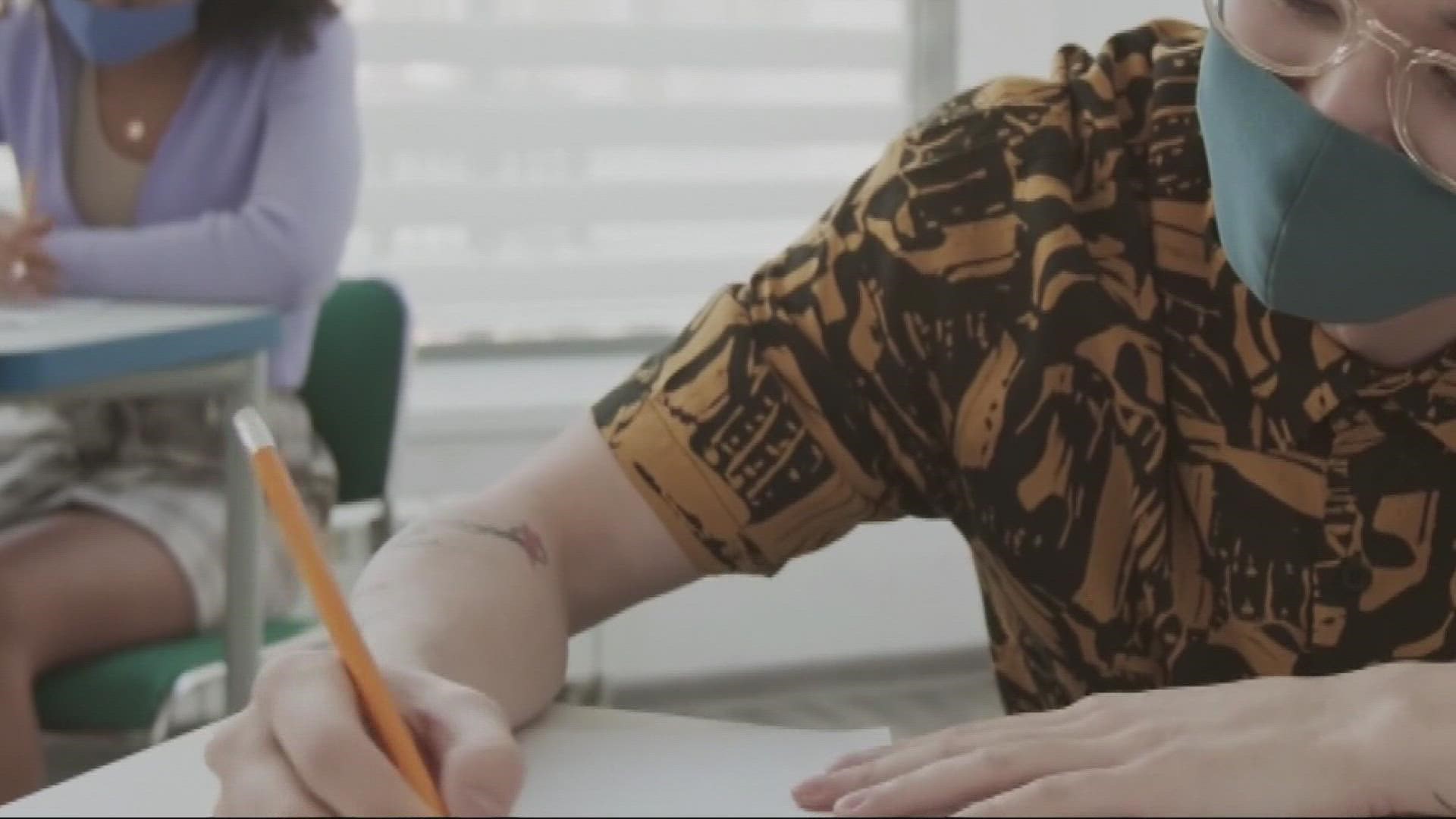SALEM, Ore. — The Oregon Health Authority (OHA) and Oregon Department of Education (ODE) issued a School Health Advisory on Monday, updating the state’s COVID-19 school safety protocols as Oregon braces for an unprecedented wave of cases spurred by the omicron variant.
The advisory doesn’t outline any immediate plans to switch to remote learning, but stresses that schools need to double down on layered mitigation efforts – meaning vaccinations, boosters, face masks, physical distancing and ventilation, all done together – in order to keep kids in classrooms and avoid closures.
“It's a variant that spreads very quickly,” said ODE Director Colt Gill. “And in places where you don't have layered mitigation protocols tightly in place, we will see the spread of omicron in those places, and that will cause schools to close their in-person instruction. And we want to avoid that if we can at all.”
RELATED: Seattle Public Schools replaces first day back from winter break with voluntary COVID testing
The advisory also states that schools and other organizations should either pause their extracurricular activities or ensure that the full set of layered mitigation safety protocols can remain in effect during the activities.
The decision is ultimately up to individual school districts, Gill said, but his department is stressing that schools should weigh the risks carefully and make sure families and communities are aware of them, particularly for activities that would preclude face coverings or physical distancing.
“We know that sports and other kinds of activities like theater are incredibly important to our students,” he said. “For some of our students, that's why they come to school each day. So we want to continue to offer it if at all possible, but we really need everyone to know that it's a risky activity, and that there are steps they can take to help protect themselves."
The state has also rolled out an option called Test to Stay, which allows unvaccinated students who are exposed to COVID-19 at school to continue attending in-person if they show no symptoms and test negative immediately after the exposure and then again about five days later, Gill said. Asymptomatic vaccinated students can stay without having to take a test.
The Centers for Disease Control and Prevention (CDC) shortened the recommended COVID-19 quarantine period from 10 days to five last month, but many school districts are sticking with a 10-day for students and staff with confirmed COVID-19 cases. The length of quarantine time is determined by local public health authorities rather than school districts or the DOE, said Department of Education communications director Marc Seigel.
Portland Public Schools announced in a letter to parents on Sunday that it would continue to use 10-day quarantines for the time being, and the Beaverton School District’s COVID Q&A webpage outlines similar rules and notes that the Washington County Public Health Department doesn’t allow for negative tests to shorten the quarantine period.
Regular and widespread testing is going to be a key part of the strategy to keep schools open during the wave, and Gill said that despite recent difficulties in test accessibility during the holidays, the schools have separate access to tests and can count on a large supply.
“Some of that will depend on really how large that surge is, but we have a few hundred thousand (tests) ready to deploy to our schools, and they have a couple of hundred thousand on site at schools right now,” he said. “So we believe that we're set.”
The PPS letter also said the district has purchased a supply of more than 1 million age-appropriate masks to distribute to schools on an as-needed basis.

